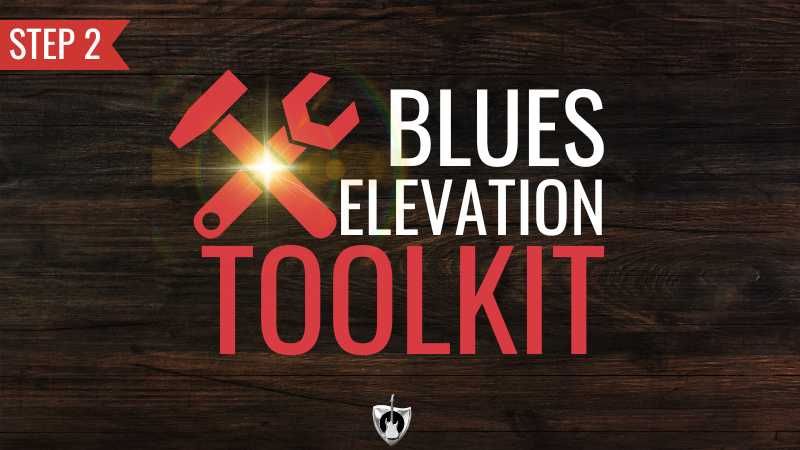Playing Guitar Scales in Different Keys

Playing scales in different keys on the guitar is challenging!
One of the first things you learn, when you have an interest in playing lead guitar, is scale patterns. Ask any guitar player, when it’s time to start shredding you need to know your patterns.
Over my last four blog posts, I have introduced my Six Essential Steps to Really Understand Guitar Scales. If you haven’t read these extremely helpful posts, I suggest you do so now.
The foundational information you get from them will speed up your learning ten fold! Click on each step below to go to that post:
- How the fretboard is set up
- What Scales Are and How They're Built
- Best Scales for Popular Music
- The Five Pattern System
- Soloing Over Chords
- Playing Scales in Different Keys
We are now in the home stretch! This is the last step, step Six!
Todays post is all about…
Playing Guitar Scales in Different Keys.
We are going to take the scales and patterns that we have learned and introduce the final step we need to use these patterns in the songs we love!
When I started playing lead guitar, I was in high school.
I was an unashamed rock guitar player and I was playing a lot of cover songs in the few garage bands that I played in. I would learn a song and try my best to memorize the lead parts.
At some point, I tried to put some of my own licks over these cover songs. I found out then that my new found licks didn’t fit all of the songs I was playing. I needed to learn how to fit them into songs in different keys.
About that time, my high school jazz band was needing a guitar player. Even though I wasn’t a fan of Jazz at the time, the thought of playing guitar at school was very enticing to me.
Being a part of the school Jazz band opened my eyes to several things. One of them being that my problems of playing in different keys was super magnified in the Jazz band. Jazz music changed key constantly. I was in over my head.
There were some key concepts that I was missing and I didn’t have a system to deal with the music I was expected to play. Over time I improved and really started to enjoy playing songs that changed key.
In this blog I share with you the things I have learned to make playing lead guitar in different keys make sense and very enjoyable!
We have an advantage.
When playing guitar scale pattern we have an advantage! This advantage is available to us through the way the fretboard is set up.
I remember taking several piano lessons. Each scale on the piano had a certain shape on the keys. To play in another key you had to learn a different shape. It was a lot to remember.
But, the guitar is set up different. We can learn one scale pattern on the guitar and use that same pattern to play in not just one…. But all of the keys.
Ok that sounds great, but how do we do that!
We slide the patterns. Lets take pattern one of the A Minor pentatonic scale for example:

If we play this scale starting where it is written, at the fifth fret. It works nicely over an A minor chord. But what if you needed to play this scale over a B minor chord. What would you do.
If you took the same pattern and moved it up two frets, to the seventh fret, it would now become a B minor pentatonic scale and match perfectly with a B minor chord. See below:

The shape of the pattern is now over different notes. The pattern looks the same but is in a different area of the guitar. That means the notes under the pattern are different.
The scale pattern automatically put all the right notes from the new scale we needed under our fingers. We didn’t need to know the names of all of the notes that are under that pattern. It does the work for us.
But we need to know a few things to really take advantage of this!
- We need to really know what the notes on the E and A strings are. (VERY IMPORTANT!)
- We need a reference point to know where the Tonic notes of the scale pattern are.
Once we can match the tonic notes of the scale patterns with the root notes of the new chord or key, we can start sliding these patterns into new keys all day long!
Notes on the E and A string.
In my post “How Do I Learn Guitar Notes on the Fretboard?” , I give you the system you need to know what any note is on the fretboard.
It is a very simple system, and one that every guitar player should know. Click the image below to learn this important information:
To match our scale patterns to new keys we need to focus on the notes from two strings. The low E string and the A string. These are the two lowest sounding strings on the guitar. These strings will help us know what key a certain pattern is in. In this post I will demonstrate moving patterns that have the tonic note based on the E string.
Not all of the patterns have that tonic note on the E string. The others have the tonic based on the A. Knowing the notes on each of these strings will give you the ability to move all of the patterns of my five pattern system.
Know your tonic notes
In the scale patterns provided from my post “Guitar scales: the five pattern system” you see that in each scale pattern there are certain notes that are notated with red dots.
That means they are special!
These red notes are the tonic notes of the scale. (The tonic note is the strongest note in a scale. Very similar to a root note of a chord) We give the scale it’s name from the tonic note.
So, in the A minor pentatonic patterns below, every time you see a red dot, that is an A note, the tonic note of the scale.

Knowing that that special red note is the A is key! Now that we know that, we can start moving these patterns around.
If we slid pattern one up one fret, what note would the red dot fall on? Well the red dot would now be on the sixth fret. We need to know the name of that note.
Let’s count up the notes of the E string until we come to the sixth fret.
0 1 2 3 4 5 6
E F F# G G# A A#
The sixth fret on the low E string is an A# (or Bb). That would mean that pattern one played at the sixth fret would be an A# minor pentatonic scale and would sound great over an A# minor chord.
If we moved the scale up two frets, the red note would now fall on a B. The seventh fret on the low E string is a B. This scale would now sound great over a B minor chord.
Do you see how that works. This pattern will work on any fret of the low E string and the scale that is played will take on the name of the note under the red dot.
Remember that this just changes the key of the scale, not the type of scale that is played. That shape that we have been playing will always stay a minor pentatonic scale. I will just be in a new key depending on what fret it starts on.
But what about all of the other scale patterns?
That was just pattern one. What do you do with pattern two through five?
Well they slide along with them. It all continues in order. Pattern one goes to pattern two, to pattern three, to pattern four, to pattern five, and back to pattern one again.
The patterns look the same and follow the same order. If you slide up pattern one, two frets, then you also slide up pattern two, two frets.
You will see that the red dots, in all of the patterns, become the new tonic note. Take a look below at the difference between A minor pentatonic and B minor pentatonic.
It’s the same thing, everything just slides up two frets.
Other important notes in the patterns
Other than the tonic, there are some other important notes in the scale patterns.
Although not as strong as the tonic note, the third and fifth are important notes to know as an improviser.
The third and fifth notes of the scale are the other two chord tones in a triad. When you play them in a scale they sound very strong because they perfectly match the notes in the chord that you are playing.
Click the image below to check out my post on building Chords to learn all about the notes in chords:
Another great feature of these scale patterns is that if you know where the third and fifth notes are in one key, when you slide the patterns up into a new key and play that same place in the pattern, you will get the 3rd and 5th of the new scale. The strong notes are found in the same places of the pattern, regardless of what key you are in.
To demonstrate this, lets take a look at A major pattern one. I will have the tonic note in red, the third in blue and the fifth in green. When you slide this pattern up 2 frets into the key of B, The 3rd and 5th are still found at the same place in the pattern. The pattern has put the 3rd and 5th of the new key in the same place under your fingers.

As you play these patterns a lot, you get used to where the strong notes are. It’s great that this relationship stays the same as you slide them into new keys!
Songs that change key
Putting this into practice is fun when you are just playing songs in different keys! But, what about songs that change key mid-song?
In popular music, usually a song only changes key once or twice for dramatic effect. Think about “My Girl and “Livin’ on a Prayer”. It’s just there to give special interest usually in a later part of a song. In Jazz music, chord changes seamlessly go through multiple keys.
How do we approach these types of songs?
Once you are familliar with the tonic notes of all of the patterns, you will need to do some preparing when approaching these types of songs.
Looking ahead to the new keys and scale patterns is the name of the game. Find where the new tonic note of the new key is and plan ahead.
Find what pattern of the new key is closest to the pattern that you are currently playing in. When it is time, try to play your melody line in the direction of the new tonic note.
Timing and rhythm is super important when doing this. Hitting that new key at the right time is what will make the key change in your melody sound effortless.
Once you make it to the new tonic note, continue on with the new scale pattern in the new key.
Conclusion
The more I understand how the guitar fretboard works, the more excited I get.
The way scale patterns work over the fretboard save so much time! If you had to learn all of the notes across the fretboard without these patterns, it could take a lifetime to master.
Take some time moving your scale patterns into different keys and play them over different background tracks. It won’t take long to get up and running and creating your own unique melodies in many different songs that are in many different keys.
Question
Have you found playing scale patterns in different keys difficult? If so, let me know what your experience was in the show notes below.
GET FREE WEEKLY GUITAR LESSONS, PODCASTS, AND MOTIVATION DELIVERED TO YOUR INBOX.
Your information is kept safe. It's never shared with third parties.






